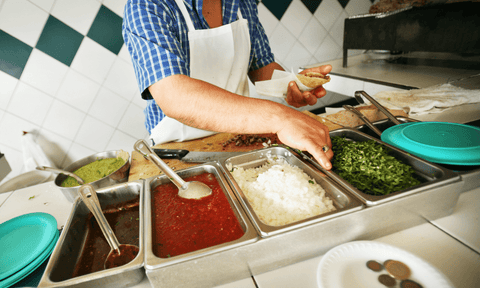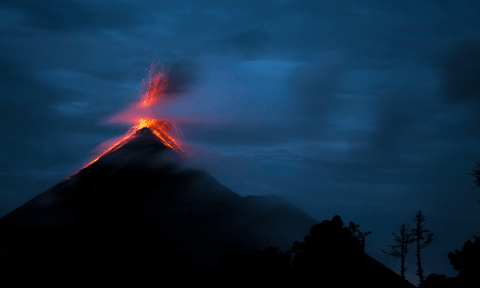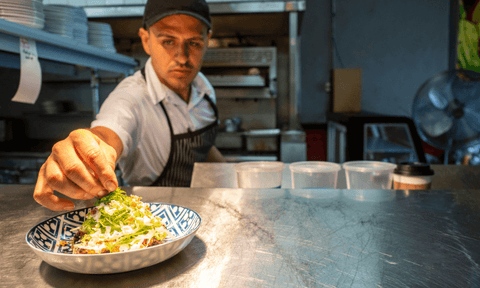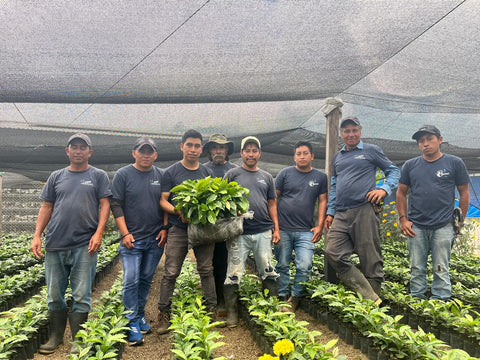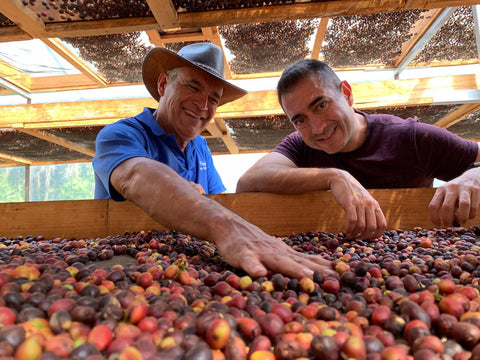ORGULLO LATINO
Reading time: 4 minutes
Encebollado: Ecuador’s Failsafe Hangover Cure
It may sound (or taste) a little fishy, but Ecuadorians are firm believers that an age-old broth is still the best cure for a hangover.
If one day you wake up, head pounding, with a chuchaqui (hangover), remember that Ecuadorians claim to have the formula to combat even the worst morning-after-the-night-before: encebollado.
Essentially, encebollado is a fish soup accompanied by lots of onions (from which the dish gets its name). Encebollado consists of four basic ingredients.
How to Make Encebollado
"First and foremost, there's protein," says Rubén Ulloa, a local chef and owner of Achira "Envueltos Tradicionales" in Quito. "For encebollado, we use albacore, a type of tuna.
"To this, we add cassava puree and, as its name suggests, a lot of onion – in this case, the small red variety chopped into julienne strips, as well as coriander. Other ingredients such as lemon and cumin are then also added to flavor the broth."
In fact, the herbs seem to be as important as the fish itself as Rubén explains that "Ecuadorian food is inconceivable without coriander and cumin".
"I have found three versions of encebollado," Rubén continues. "There's the coastal version, mainly served in the province of Guayas, which is the central coast of Ecuador, where it is eaten with rice and bread. Then there's the southern version, served in Machala, where it is accompanied by a lot of chifle (fried plantain chips). In Quito and the highlands it is eaten with chifle and canguil."
Ecuador's small size and wide coastline mean that cultural and geographical differences between the coast and the highlands define its cuisine. Even in dishes as ubiquitous as encebollado.
These differences have not only led to the different versions of the national dish but also when it is consumed. For example, in the highlands, it is eaten in the morning and at midday but on the coast, it is eaten at all hours of the day, Rubén explains.

Is Encebollado Medicinal?
According to the Manabí province’s government records, there is evidence of boiled fish made by the Valdivia culture dating back to 3500 BC. This is considered the oldest antecedent of the encebollado.
The Valdivia culture occupied what is now Isla Puná, Los Ríos, Manabí and Guayas. The exact area where many believe the dish originated.
However, as is often the case with Latin American food, this early version of the dish was adapted over the years. As new flavors and ingredients made their way onto the continent, they were added to the recipe.
In the case of the encebollado, these ingredients were onion and lemon. This amalgamation of flavors and influences is why Rubén describes it as a "mestizo dish".
Today, encebollado is sold in small carts and stands on street corners throughout the country as a cure for hangovers. The lack of any real scientific backing hasn’t diminished the trust that Ecuadorians place in the dish as a hangover cure. It is still eagerly handed out to guests leaving a farra in the early morning hours.

The Cultural Significance of Encebollado
While encebollado was originally considered a poor man's dish due to the cheap fish used for making it, today it is an extremely popular national dish.
"It started as a very stigmatized dish," Rubén says, explaining that while it was very popular among those working in port cities, the color of the fish and its intense smell, made it unpopular with the more well-to-do.
In fact, this perception is part of the cultural meaning of the encebollado and probably what allowed for its rapid popularization in Ecuador. It was – and still is – an extremely affordable dish. "You can get it on a street corner or at a huequito for $2, in huecas for $3 and high-end restaurants for about $4," Rubén says.
"But this perception has changed over time," Rubén says.
Today, it is considered the most valued dish in the country and enjoyed by all. It was even chosen as the emblematic dish of the year, over hornado, in 2015 in a Ministry of Tourism survey.
That same year, a national encebollado tournament was held in which 151 ventures participated.
But the encebollado is not only celebrated during competitions: many songs have also immortalized the dish and refer to its healing and protective properties.
The Ecuadorian rock band Guardarraya sang:
Si no me ayudas no tengo otra, mi alma tengo que entregar (If you don't help me I have no other, my soul I have to give up)
Él me ofreció un encebollado y una agüita mineral (I offer you an encebollado and mineral water)
Pero eso yo no quiero, mi alma quiero conservar (But I don't want that, I want to keep my soul)
Por eso te ruego clemencia, Lucifer me va a llevar (Therefore I beg you Clemencia, Lucifer will take me.)
Because if anything explains the encebollado, it is that comfort food, with a touch of magical realism, cures all ailments.


